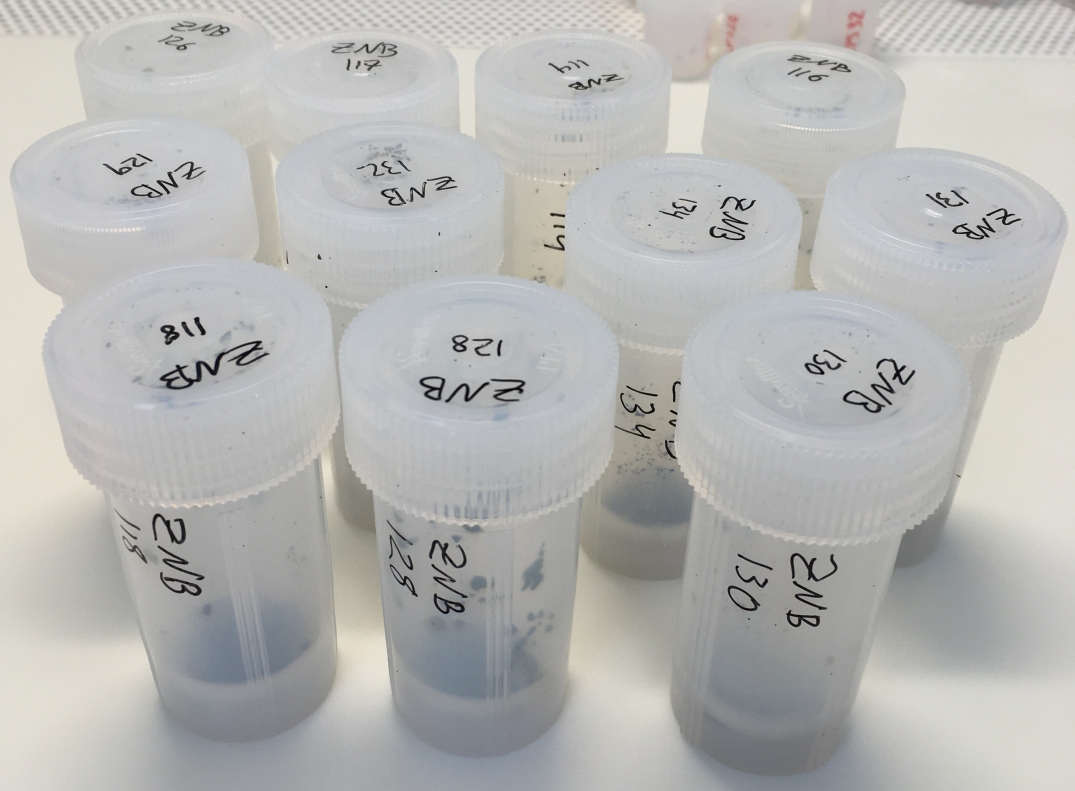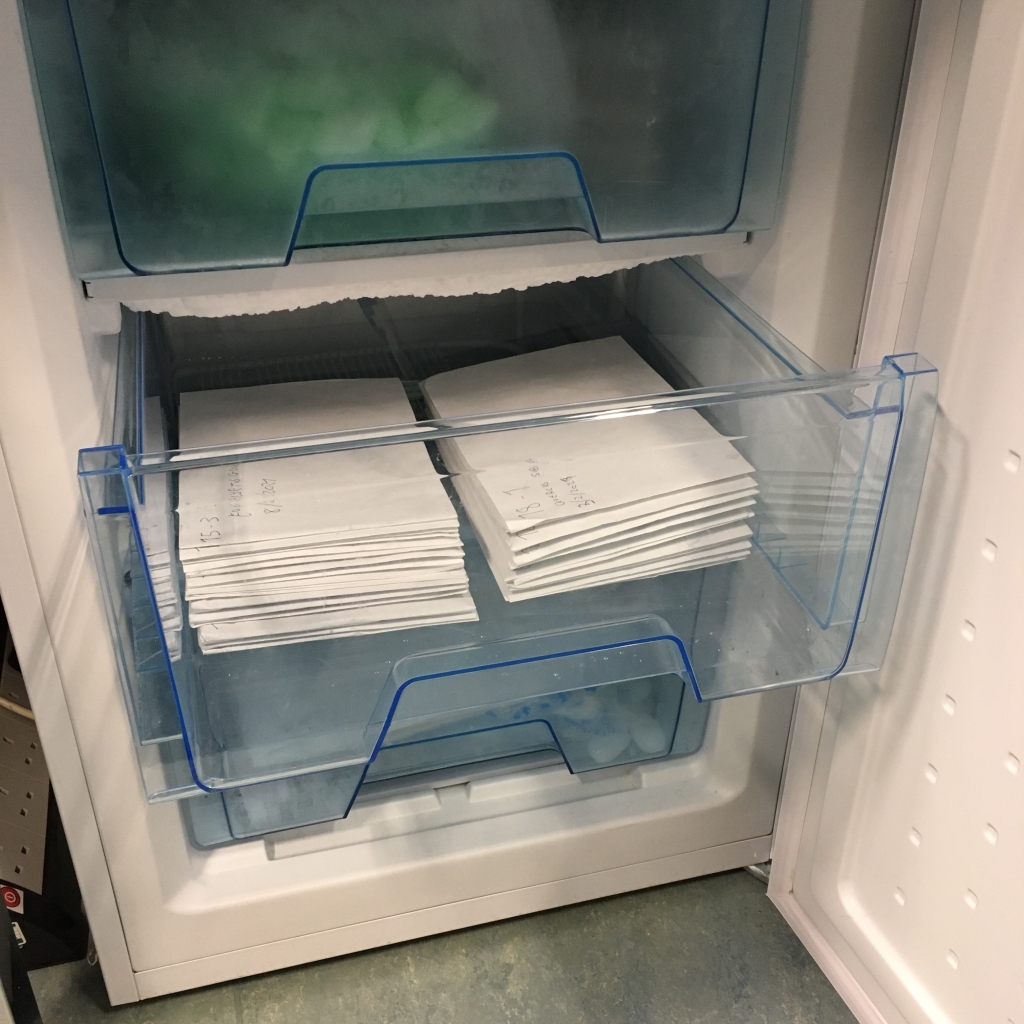Ora che il campionamento delle piante è finito, il prossimo passo di ZANBA può iniziare sul serio: l’estrazione e l’analisi dello stronzio. L’ alto livello di materiale organico nei campioni di piante rende l’estrazione dello stronzio un processo lungo – più lungo rispetto all’estrazione dello stronzio dai denti umani o animali che sono spesso l’obiettivo degli studi archeologici sullo stronzio. I campioni devono stare prima in acido nitrico concentrato per iniziare la “digestione” della materia organica. Una volta che l’acido nitrico ha reagito completamente con i campioni, va aggiunta una soluzione di perossido di idrogeno per continuare il processo di digestione. Il processo richiede molta attesa – può volerci più di una settimana perché le sostanze chimiche finiscano di reagire con i campioni.
Il tutto avviene in un clean lab sotto una cappa; quindi, il numero di campioni che può essere processato è limitato dallo spazio, dai rifornimenti, e dagli altri ricercatori che devono usare il laboratorio. Riuscire a processare tutti i 126 campioni sarà una sfida!










